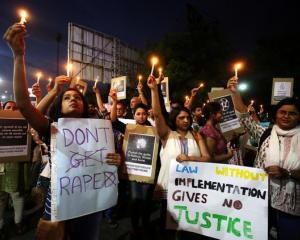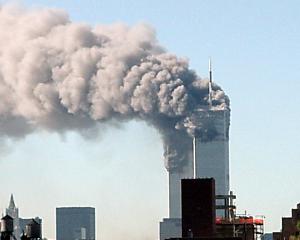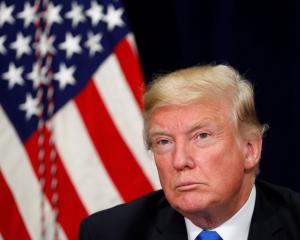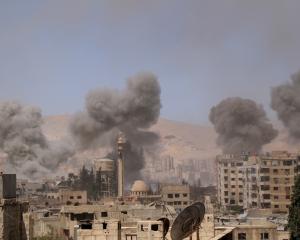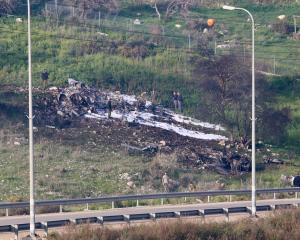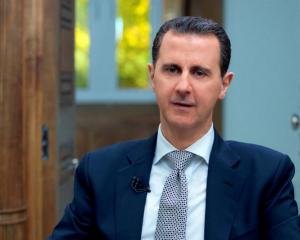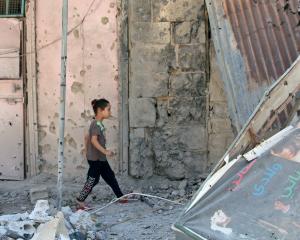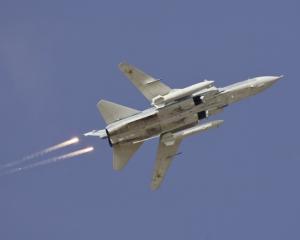If the accounts are confirmed, the killings in the mainly Sunni Muslim suburb of Jdeidet al-Fadel would amount to one of bloodiest episodes of the two-year-old uprising against Assad. Many of the dead were civilians, the activists said.
Veteran activist George Sabra, who was appointed on Monday as temporary president of the Syrian National Coalition (SNC) umbrella group, said Assad's militia, known as shabbiha or ghosts, paraded dead bodies on open trucks through the streets of the Mezze district of western Damascus.
"Instead of liberating their land, the so called leader of Syrian resistance, Bashar al-Assad, sent them his shabbiha and murderers to kill and massacre," Sabra told a news conference in Istanbul.
Sabra, a Christian who spent eight years as a political prisoner under the iron fisted rule of Assad's late father, described the killings as one of many "crimes against humanity" being committed in Damascus.
The SNC condemned "the deafening silence of the international community."
"Syrians no longer expect an answer to our pleas for help or a chivalrous intervention from our brothers and neighbours. We no longer expect to be supported with the necessary arms to empower the Free Syrian Army to defend our people," the SNC said in a statement issued from Istanbul.
Syrian state media gave no death toll but confirmed the army had been fighting in Jdeidet al-Fadel. It said it had saved the town from what it described as criminal terrorist groups, killing and wounding an undisclosed number of them.
On Sunday, activists said at least 85 people had been killed and the toll might reach 250, but, as the army pulled back, more accounts emerged to suggest a much higher final figure.
The activists, speaking from the area, 10 km (six miles) southwest of Damascus, said residents had buried some victims in the early stages of the five-day attack by elite forces and pro-Assad militias. More bodies were now being found burnt or apparently killed in summary executions, they said.
Rebels who numbered around 300, withdrew two days ago, they said, leaving Assad's forces in total control.
The working-class district is one of several Sunni Muslim towns surrounding the capital that have been at the forefront of the uprising. It is situated near hilltop bases of elite forces which are mostly from Assad's minority Alawite sect, an offshoot of Shi'ite Islam that has dominated Syria since the 1960s.
BODIES LYING IN STREETS
Shamel al-Golani, of the opposition Sham News Network, said one of the hardest hit areas was a neighbourhood adjacent to the 100 army brigade, one of the elite units based locally.
"In the first three days the army would go into neighbourhoods and commit killings and withdraw and come back the next day," he said.
"Many of them who were killed early were refugees from Daraya and al-Mouadamiya and were buried quietly," he said, referring to two adjacent suburbs that have been the scene of fighting and several army incursions.
Assad's forces have been accused of massacring hundreds of Sunni Muslims in areas they stormed in Hama and Homs provinces and Damascus suburbs. International rights groups say rebel forces have also committed atrocities, although on a smaller scale.
Jdeidet al-Fadel lies on the road from Damascus to the Israeli-occupied Golan Heights. Its residents are mostly Golan refugees and in the last year thousands of families from nearby areas took shelter in the town.
The Syrian Organisation for Human Rights (Sawasiah), which put the death toll at 500, said the army forces included elite Republican Guards, the 100 and 153 artillery brigades and the 555 brigade, formerly known as the Defence Brigades.
Units of "sectarian militia" supported by members of air force intelligence, one of the most feared of a myriad of secret police branches, accompanied the army units, it said.
According to witness accounts heard by the Syrian organisation, water and electricity were cut off from the town and residents were not allowed to leave as Assad's forces blocked ways in and out of the suburbs.
Many of the victims, Sawasiah said, were civilians, targeted because the suburb was an "incubator for armed resistance" and they had showed solidarity with refugees in adjacent towns also subjected to mass killings.



